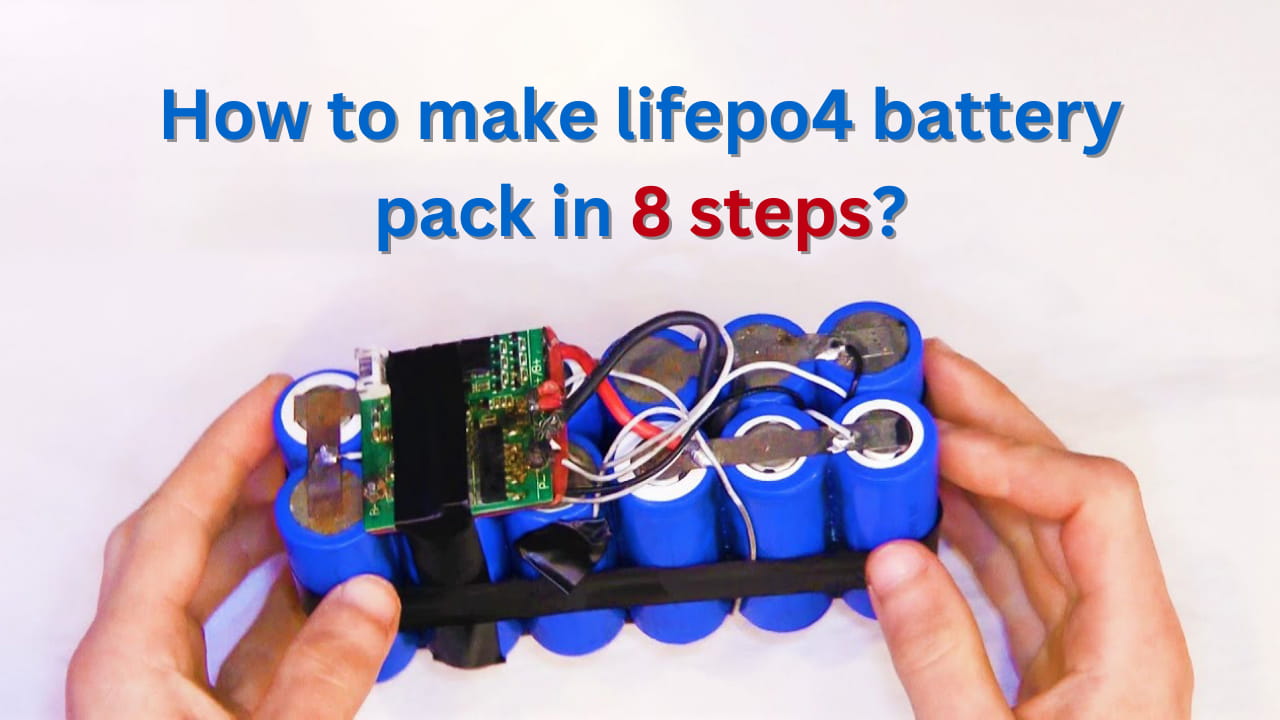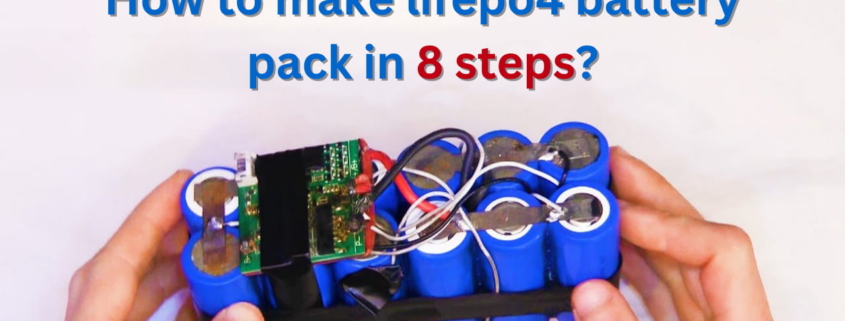How to make lifepo4 battery pack in 8 steps?
Making your LiFePO4 battery pack is a great way to save money and ensure you have a reliable energy source. LiFePO4 batteries are popular due to their high energy density, long lifespan, and relatively low cost. But how to make lifepo4 battery pack?

How to make lifepo4 battery pack?
Making a lifepo4 battery pack is a relatively straightforward process, but it’s essential to be aware of the safety risks associated with working with batteries. Here are some steps to follow when making your lifepo4 battery pack:
1. Gather the necessary materials
You will require LiFePO4 batteries, battery holders, cable, shrink tubing, a battery management system (BMS), a voltage monitor, and a charger. These parts are available online or at battery supply stores.
2. Choose the right cells
LiFePO4 cells are available in a variety of voltages and capacities. You must select cells with the appropriate voltage and capacity for your project. Selecting cells with a high discharge rate will enable you to utilize more of the battery’s stored energy.
3. Connect the cells in series
For example, you must series-connect six 2V cells to create a 12V battery pack. The positive terminal of one cell is wired to the negative terminal of the following cell. Continue doing this until every cell is connected.
4. Connect the BMS
The BMS must balance each cell’s voltage to avoid overcharging or over-discharging. Make sure the BMS is correctly wired by the manufacturer’s instructions and connect it between the cells.
5. Install the voltage monitor
This tool can check that the battery pack’s voltage stays within acceptable bounds. Connect the BMS to the voltage monitor.
6. Install the battery holders
The battery holders will maintain the cells’ position and keep them from shifting while in operation. Attach the battery holders to the battery pack to hold the cells in place.
7. Connect the charger
When the battery pack’s energy level is low, you can recharge it with the help of the charger. Ensure the charger is wired correctly and by the manufacturer’s recommendations before connecting it to the BMS.
8. Run a battery pack test
Connect the battery pack to a load and turn on the voltage meter. Please make sure the voltage is within safe ranges by checking it. You should be able to use the battery pack to power your devices if everything is operating as it should.
Conclusion
You can make a high-quality LiFePO4 battery pack that will serve as a dependable source of power for your projects by following these instructions. Electric vehicles, portable power stations, off-grid power systems, and other uses benefit greatly from LiFePO4 batteries. Making your LiFePO4 battery pack is a gratifying and challenging project that will deepen your understanding of batteries and energy storage systems, regardless of whether you are an engineer or a DIY enthusiast.








